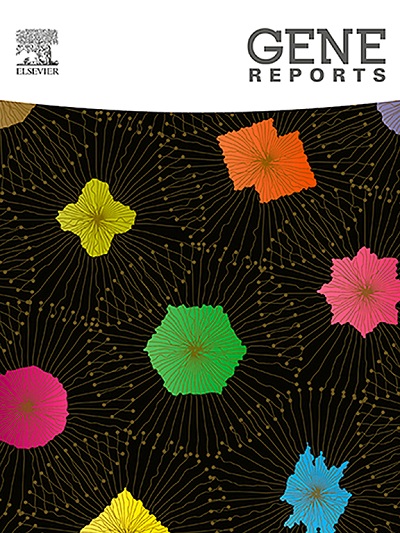Genetic insights and phylogenetic relationships of Momordica balsamina using DNA barcoding: An accurate tool for species identification
IF 1
Q4 GENETICS & HEREDITY
引用次数: 0
Abstract
The Momordica balsamina, a member of Cucurbitaceae family is a plant species of immense botanical, phytochemicals, pharmacological, and medicinal value. Accurate identification is crucial in order to extract valuable bioactive compounds which is important for ensuring the quality and safety of herbal medicines. While traditional taxonomic methods aid in species identification but an innovative and authentic method for identifying species is DNA barcoding, which is based on the nucleotide diversity of conserved sequences. Plant DNA barcoding systems are more difficult to build and refine because of the enormous genetic variation among species. To ensure a more reliable approach, plant scientists should focus on conserved nuclear-transcribed regions to analyze genetic diversity, species differentiation, and phylogeny. In this study, we amplified and sequenced the rbcL, matK, and ITS regions of Momordica balsamina. Furthermore, there Phylogenetic tree analysis, bootstrap percentage, sequence homology and failed amplification of matK were discussed. M. balsamina species were authenticated by using ITS primer (internal transcribed spacer). Through this intended research, we aim to genetically identify and characterize this medicinally important species through barcoding.
用DNA条形码分析苦瓜的遗传和系统发育关系:物种鉴定的精确工具
苦瓜(Momordica balsamina)是葫芦科的一员,是一种具有巨大的植物学、植物化学、药理和药用价值的植物。准确的鉴定对提取有价值的生物活性物质至关重要,对保证中草药的质量和安全具有重要意义。虽然传统的分类学方法有助于物种鉴定,但基于保守序列核苷酸多样性的DNA条形码是一种创新和可靠的物种鉴定方法。由于物种间存在巨大的遗传变异,植物DNA条形码系统的建立和完善更加困难。为了确保一个更可靠的方法,植物科学家应该把重点放在保守的核转录区域来分析遗传多样性、物种分化和系统发育。在这项研究中,我们对苦瓜的rbcL、matK和ITS区域进行了扩增和测序。此外,还讨论了系统发育树分析、自举率、序列同源性和失败扩增。采用ITS引物(内部转录间隔段)对香茅进行鉴定。通过这项预定的研究,我们的目标是通过条形码基因鉴定和表征这种重要的药用物种。
本文章由计算机程序翻译,如有差异,请以英文原文为准。
求助全文
约1分钟内获得全文
求助全文
来源期刊

Gene Reports
Biochemistry, Genetics and Molecular Biology-Genetics
CiteScore
3.30
自引率
7.70%
发文量
246
审稿时长
49 days
期刊介绍:
Gene Reports publishes papers that focus on the regulation, expression, function and evolution of genes in all biological contexts, including all prokaryotic and eukaryotic organisms, as well as viruses. Gene Reports strives to be a very diverse journal and topics in all fields will be considered for publication. Although not limited to the following, some general topics include: DNA Organization, Replication & Evolution -Focus on genomic DNA (chromosomal organization, comparative genomics, DNA replication, DNA repair, mobile DNA, mitochondrial DNA, chloroplast DNA). Expression & Function - Focus on functional RNAs (microRNAs, tRNAs, rRNAs, mRNA splicing, alternative polyadenylation) Regulation - Focus on processes that mediate gene-read out (epigenetics, chromatin, histone code, transcription, translation, protein degradation). Cell Signaling - Focus on mechanisms that control information flow into the nucleus to control gene expression (kinase and phosphatase pathways controlled by extra-cellular ligands, Wnt, Notch, TGFbeta/BMPs, FGFs, IGFs etc.) Profiling of gene expression and genetic variation - Focus on high throughput approaches (e.g., DeepSeq, ChIP-Seq, Affymetrix microarrays, proteomics) that define gene regulatory circuitry, molecular pathways and protein/protein networks. Genetics - Focus on development in model organisms (e.g., mouse, frog, fruit fly, worm), human genetic variation, population genetics, as well as agricultural and veterinary genetics. Molecular Pathology & Regenerative Medicine - Focus on the deregulation of molecular processes in human diseases and mechanisms supporting regeneration of tissues through pluripotent or multipotent stem cells.
 求助内容:
求助内容: 应助结果提醒方式:
应助结果提醒方式:


